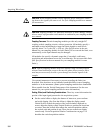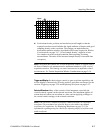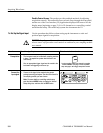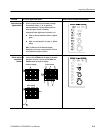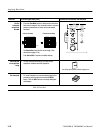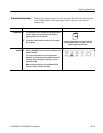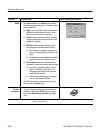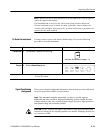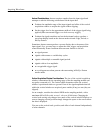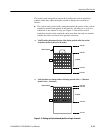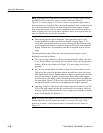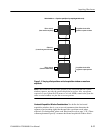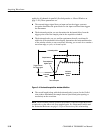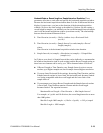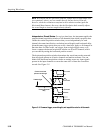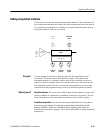
Acquiring Waveforms
3-14
CSA8000B & TDS8000B User Manual
Autoset Considerations. Autoset acquires samples from the input signal and
attempts to take the following actions based on the input data:
H Evaluate the amplitude range of the input signals and offset of the vertical
acquisition window to acquire the signal without clipping.
H Set the trigger level to the approximate midlevel of the trigger signal being
applied (either an external trigger or a clock-recovery trigger).
H Evaluate the signal transitions and set the horizontal scale to produce a
waveform display based on the Autoset mode selected: Edge, Period, or
Bit/Eye Pattern.
Sometimes Autoset cannot produce a correct display due to the nature of the
input signal; if so, you may have to adjust the scale, trigger, and acquisition
controls manually. Some conditions that can cause Autoset to fail are:
H no signal present.
H signals with extreme or variable duty cycles.
H signals with multiple or unstable signal periods.
H signals with too low amplitude.
H no recognizable trigger signal.
H no eye diagram waveform present when autosetting in Bit/Eye Pattern
autoset mode.
Vertical Acquisition Window Considerations. The size of the vertical acquisition
window is determined by the operating range of the the sampling module and
any probe connected to it. The vertical offset determines where the vertical
window is positioned relative to ground. Parts of the signal amplitude that fall
within the vertical window are acquired; parts outside (if any) are not (they are
clipped).
As an example, consider that a basic 80E00-series sampling module, with a
maximum 100 mV/div scale, covers 1 volt over 10 divisions. Changing the
vertical scale setting only changes how much of the vertical window displays on
screen; changing vertical position simply changes the space on the s creen where
the data is displayed.
You can set the vertical scale, position, and offset of each channel independently
of other channels.



